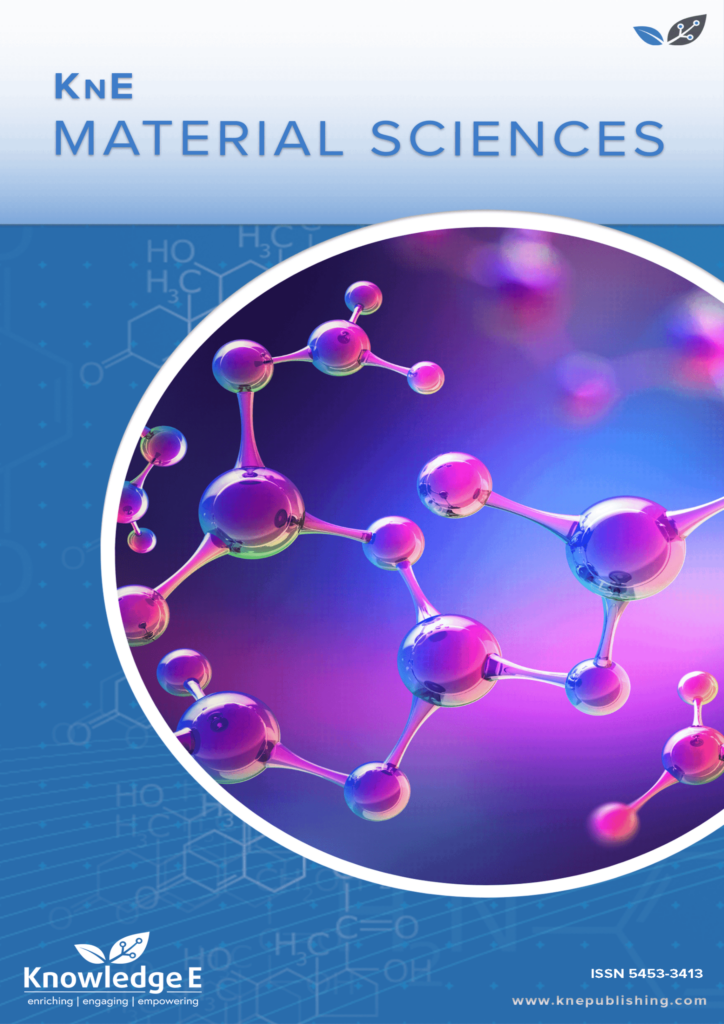
KnE Materials Science
ISSN: 2519-1438
The latest conference proceedings on physical materials, energy materials, electrical materials.
E. Globulus Vessel and Fibre Chemical Analysis
Published date: Aug 10 2022
Journal Title: KnE Materials Science
Issue title: 1st International FibEnTech Congress (FibEnTech21) – New Opportunities for Fibrous Materials in the Ecological Transition
Pages: 25–33
Authors:
Abstract:
Hardwood species have a complex cellular structure consisting of fibres, vessel elements and parenchyma cells with different chemical compositions. However, the presence of vessels with significant dimensions in their structure is a recurrent problem in the operation of industrial UWF paper printing. Since the 1980s, vessel picking and ink refusal are problems that paper professionals have tried to solve, but solutions for these have not yet been fully found. If vessels are concentrated in a stream, they can be pre-treated (e.g., by mechanical refining) and reincorporated into the pulp. Other strategies aim at vessel enzymatic and/or chemical passivation and sheet surface chemical treatment, altering the vessel adhesion to the fibre network. This requires vessel concentration at laboratorial level for proper chemical studies, such as FE-SEM, μ-XPS, TOF-SIMS and μFTIR. The main objective of our experimental study was to examine bleached kraft pulp E. globulus vessel and fibre composition. For this we performed EDX and μ-FTIR analysis on both fibre and vessel elements, and obtained the carbohydrate composition, the total acids content, the hexenuronic acids content and the zeta potential.
Keywords: E. globulus, vessel, EDX, μ-FTIR, sugar content, zeta potential
References:
[1] Dadswell H, Wardrop A. Some aspects of wood anatomy in relation to pulping quality and to tree breeding. Appita. 1960;13(5):161-173.
[2] Alén R. Papermaking science and technology. Stenius P, Pakarinen H, editors. Helsinki: FapetOy; 2000.
[3] Chen F, Evans R. A robust approach for vessel identification and quantification in eucalypt pulps woods. Appita. 2005;58(6):442-447.
[4] Orblin E, Lindström N, Fardim P. Probing the chemical and surface chemical modification of vessel cell walls during bleaching of eucalyptus pulp. Holzforschung. 2012;66(8):945-950.
[5] Ohsawa J. Vessel picking in printing papers. Paper presented at: Tropical Wood Pulp Symposium; 1988 Jun 21-23; Singapore.
[6] Jopson N. Coping with hardwood vessels. Pulp & Paper International. 2005;47(11):36- 37.
[7] Chen C, Liu H-B. The causes and solutions of the vessel picking. China Pulp and Paper. 2013;32(12):66-69.
[8] Heintze H, Shallhorn P. Hardwood vessel picking and manufacturing process. Pulp and Paper Canada. 1995;96(11):28-30.
[9] Rakkolainen M, Kontturi E, Isogai A, Enomae T, Blomstedt M, Vuorinen T. Carboxymethyl cellulose treatment as a method to inhibit vessel picking tendency in printing of eucalyptus pulp sheets. Industrial & Engineering Chemistry Research. 2009;48(4):1887–1892.
[10] Hardell H, Leary G, Stoll M, Westermark U. Variations in lignin structure in defined morphological parts of spruce. Svensk Papperstidning. 1980;83(2):44-49.
[11] Panula-Ontto S, Fuhrmann A, Kariniemi M, Särkilahti A. Evaluation of vessel picking tendency in printing. Paper presented at ICEP International Colloquium on Eucalyptus Pulp; 2007 Mar 4-7; Belo Horizonte, Brazil.
[12] Backfolk K, Henricson K, Kajanto I, Karjalainen M, Niinimäki J, Rousu P. Wheat straw pulp fractionation part 1. The effect of cells, vessels, and fines on paper properties. Cellulose Chemistry and Technology. 2013;47(5):443-453.
[13] Soszynski R. The formation and properties of coherent flocs in fibre suspension [Ph.D. thesis]. University of British Columbia, Vancouver, Canada; 1987.
[14] Jacquelin G. Methods of treating suspensions of fibres to form fibrous aggregates. United States patent. US 3, 679, 542. 1972 July 25.
[15] Orblin E, Eta V, Fardim P. Surface chemistry of vessel elements by FE-SEM, μ-XPS and ToF-SIMS. Holzforschung. 2011;65:681-688.
[16] Chai XS, Zhu JY, Li J. Simple and rapid method to determine hexeneuronic acid groups in chemical pulps. Paper presented at: 10